What Happens to a Tankful of Fish in Orbit?
Why are there two high tides a day when there's only one moon? Would a planet made of glass be transparent? Does dreaming about exercise burn more calories? And what would happen to a tankful of fish launched into Earth's orbit? To find out, and to hear how the solar cells of the future can keep themselves clean, how researchers have uncovered a new way to combat cancer and how astronomers have spotted showers of meteors hitting Jupiter, join Drs Chris, Dominic and Dave as they blast off into a new series of the Naked Scientists in pursuit of the ultimate answers to your wildest and wackiest questions...
In this episode

- Fungal enzyme gives yeast green energy boost
Fungal enzyme gives yeast green energy boost
Green fuels, like bioethanol, produced by yeast fermentation of plant sugars can be used to cut greenhouse gas emissions. Unfortunately, yeasts are naturally metabolically unequipped to make use of a major component of plant matter, the cellulose polymers that make up plant cell walls.
But now, with the help of some genetic know-how from a plant-degrading fungus, scientists have succeeded in producing modified yeasts capable of fermenting food that was formerly indigestible. 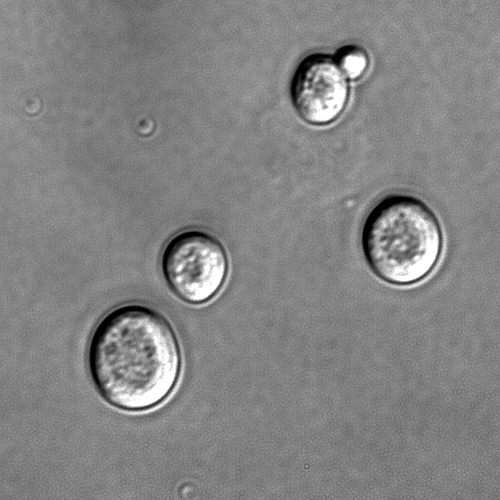
Writing in Science, UC Berkley researcher Jonathan Galazka and his colleagues borrowed a series of recently-identified genes found in a fungus called Neurospora crassa and inserted them into Saccharomyces cerevisiae (brewer's yeast). The added genes code for a transporter system embedded in the cell membrane that takes up cellulose chains (cellodextrins) and moves them inside the cell, where an enzyme called beta-glucosidase, which works like a molecular pair of scissors, chops up the chains into molecules of glucose that can then be fermented. Growing on cellulose, the modified yeast was able to produce ethanol (alcohol) with a yield of over 86%, close to the theoretical maximum achievable industrially when yeast is grown on glucose.
According to the researchers, "the addition of a cellodextrin transport system to biofuel-producing strains of yeast overcomes a major bottleneck to fermentation of lignocellulosic feedstocks and likely will help to make cellulosic biofuels economically viable."
- Brain maturity scan
Brain maturity scan
Parents accustomed to plotting their baby's height and weight on a growth chart might one day find themselves also graphing their offspring's brain development too. 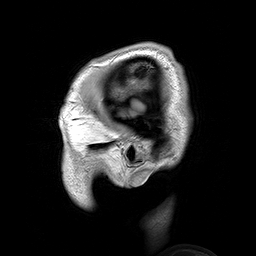
Washington University researcher Nico Dosenbach and his colleagues, writing in Science, analysed the MRI brain scans of 238 individuals between 7 and 30 years old to see how the connectivity of the brain alters with age and maturity. Using a mathematical algorithm to tease out relationships linking the activities in different parts of the brain while each subject rested in the scanner for 5 minutes, the team found a striking result. As the brain "matures" with age the pattern of connections changes significantly. Younger subjects, they found, tended to have denser functional connections between closely-situated brain areas; adults, on the other hand tend to show weaker short-range functional connections and stronger links to more spatially separated brain regions. The researchers have been able to generate a "remodelling roadmap" that traces how these brain connections alter over time.
This could provide a very useful tool in assessing individuals with behavioural, neurodevelopmental and psychiatric complaints. As the team point out, brain scans are often performed as part of the workup for a suspected developmental disorder, but these scans tend only to exam the gross anatomical structure of the brain. Instead, simultaneously studying the connectivity of the brain, which this study has shown requires no additional time in the scanner, would provide the neurological equivalent of plotting a child's growth trajectory to pick up a problem early...

01:49 - Self cleaning solar cells
Self cleaning solar cells
Many of the sunniest places on earth are also deserts, therefore the best place to put your solar cell is both very dusty and also very short of water to wash the dust off your panels, this can seriously reduce the efficiency of the system. Not only is this a problem on earth but the Mars rovers Spirit and Opportunity have been slowly loosing power and if it wasn't for the occasional martian mini whirlwind they would have conked out years ago.
Malay Mazumder, a from Boston University has been working on this problem for lunar landers and may have come up with a neat water free solution which will work on earth too. The idea is to cover the solar cell with small transparent electrodes and then occasionally apply high voltage to these electrodes. The voltages are arranged to form waves moving across the panel, which charge up and then push dust particles away from and then across they panel.
They can remove 90% of the dust on a panel in about 60 seconds, and the energy use is very small despite the high voltages involved as the currents are tiny. So future Mars missions may be less dependent on lucky dust devils, and on earth solar power could be cheaper in deserts.

03:30 - A breath of fresh air in climate change debate
A breath of fresh air in climate change debate
A new model of future greenhouse gas emissions suggests that it's not too late to reverse predicted climate change trends. In fact, the new study shows that the main greenhouse gas threats to Earth's future climate have yet to be built.
Writing in Science, Carnegie Institution-based researcher Steven Davis and his colleagues mathematically "froze" the Earth in its present state of emissions and asked what would happen if all of the present grenhouse gas sources on the planet were allowed to continue emitting for their working lifetime, but without any new CO2-sources being added. In other words, is there already sufficient climate-change inertia with the greenhouse-gas-producing infrastructure we already have to mean that it's too late to make a difference?  Surprisingly, the answer that emerged from the analysis was no; in fact, the study shows that it's what we build next that matters most to the future of the planet. Reassuringly, the team found that our present CO2-producing capacity, in its working lifetime of up to about 40 years, would see the CO2 level stabilise at about 430 parts per million (ppm), some way short of the 450ppm viewed by many scientists as the point of no return.
Surprisingly, the answer that emerged from the analysis was no; in fact, the study shows that it's what we build next that matters most to the future of the planet. Reassuringly, the team found that our present CO2-producing capacity, in its working lifetime of up to about 40 years, would see the CO2 level stabilise at about 430 parts per million (ppm), some way short of the 450ppm viewed by many scientists as the point of no return.
But we cannot afford to be complacent, caution the researchers. According to co-author Ken Caldeira, "because most of the threat from climate change will come from energy infrastructure we have yet to build, it is critically important that we build the right stuff now - that is, low carbon energy technologies."

06:37 - Asteroids in the outer Solar System
Asteroids in the outer Solar System
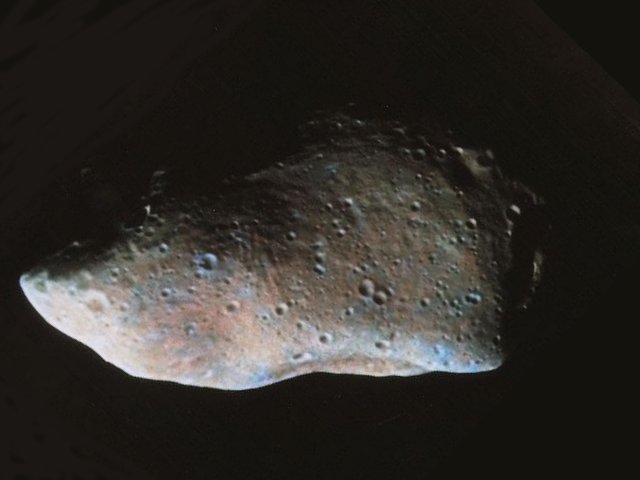 A paper published this week in the Astrophysical Journal presents the first direct observations of small asteroids in the outer solar system. This all began in June, when two amateur astronomers, on different continents, happened to be pointing their telescopes at Jupiter when they both simultaneously observed a two-second flash, apparently in Jupiter's atmosphere. Since then, astronomers have been working to explain what was seen.
A paper published this week in the Astrophysical Journal presents the first direct observations of small asteroids in the outer solar system. This all began in June, when two amateur astronomers, on different continents, happened to be pointing their telescopes at Jupiter when they both simultaneously observed a two-second flash, apparently in Jupiter's atmosphere. Since then, astronomers have been working to explain what was seen.
It's likely that what was seen was a small meteor burning up in Jupiter's upper atmosphere, and research published this week produces a fairly precise estimate of the size of the object: probably around 10 metres across.
That's fascinating because it's the first time that such a small object has been directly observed at such a distance. We've always suspected that there must be a large number of small rocks in the solar system, but have never been able to see them at these distances or get much idea of how many there might be.
This story was given another exciting twist in August when a second similar flash was observed by another pair of amateur astronomers. It seems highly likely that these events have always been occuring at a rate of a few per year, but that because they've generally been thought impossible to observe, they've gone unrecorded. If so, we may well expect to see a flurry of more similar discoveries in coming months.
If we do, that will be really exciting because we will begin to get an idea of exactly how many asteroid there are around Jupiter, and what the distribution of their sizes looks like. That will really help us to understand how material is distributed in the asteroid belt, and perhaps help us to understand where it came from.

09:50 - RNA-away cancer cells
RNA-away cancer cells
A molecular magic bullet could hold the key to selectively deleting cancer cells from the body, a new study has shown. Writing in PNAS, California Institute of Technology researcher Niles Pierce and his colleagues describe how they have developed a new breed of intelligent smart bombs that can penetrate cells but then only "detonate" if a cell is cancerous. 
The technique makes use of short pieces of genetic material called small conditional RNAs. These molecules consist of two linked components, a "diagnostic" detection sequence, which probes the genes inside a cell for a predetermined tell-tale cancer sequence, and a therapeutic tail structure which, if activated by the diagnostic component locating its target cancer-specific gene sequence, triggers the cells to self-destruct. The technique works by fooling cancerous cells into thinking they been infected by a virus so that they activate an enzyme called PKR, which destroys the cell to prevent the imaginary virus from spreading. This occurs because when the diagnostic component of the conditional RNA identifies its genetic target, it triggers the "therapeutic" component to unwind itself and begin to join up with the therapeutic tails of other conditional RNA molecules producing double stranded RNA, which is usually only found in virally-infected cells. The team tested their anti-cancer bullets against four different cultured human cancer cell lines and were able to achieve between 20 and 100 fold reductions in the cancer cell populations.
If the approach can be successfully translated to patients it will provide a powerful way to selectively remove cancerous cells, including those that have spread (metastasised) around the body, whilst sparing patients the unpleasant side effects associated with current chemotherapy regimes.

13:19 - Variable fundamental constants
Variable fundamental constants
Something which perplexes physicists is why the fundamental physical constants are what they are, why is the speed of the light about 300 000km/s, why is the charge on an electron 1.6 x 10-19C etc. and for that matter are they actually constant. This boils down to why does physics behave as it does, and is it the same everywhere?
The problem is that we can only do experiments to measure them precisely where we can get an experiment to - essentially just in our solar system. Otherwise we are limited to what we can observe. One fundamental constant we can observe very accurately is called the fine structure constant - this is a combination of the charge of an electron, the plank constant and the speed of light, and measures how electric field and quantum mechanics interact to create energy levels in an atom. And it can be measured by looking at the spectra of atoms, so it is very convenient for astronomers.
Close to the earth this seems to be constant, but John Webb and collegues from the university of New South Wales have been looking at some of the most distant sources we can see - quasars which are thought to be huge black holes accreting material billions of light years away. In 2003 they discovered that the fine structure constant appears to have increased about 1 part in 200 000 since the light left the quasars.
But this study was only done in the northern hemisphere, they have recently done a simlar study in the southern hemisphere using the Very Large Telescope in Chile, which has found something possibly even more interesting - the result was that to the south the fine structure constant was changing by about the same amount as you go back in time but it was decreasing rather than increasing.
They have found a fairly strong signal but only time and more experiments will tell if it continues to hold up. If it does it might explain why fundamental physics is so well suited to life, essentially because it varies throughout the universe and our form of life has only developed in the part of the universe where it can survive.

17:21 - Music, Emotion, and Pain Control
Music, Emotion, and Pain Control
with Professor Raymond MacDonald, Dr Don Knox, Glasgow Caledonian University
Chris - Also in the news this week, EPSRC funded researchers up in Glasgow have been investigating how we respond emotionally to music, and how this could lead to music being used in pain control. Sarah Castor-Perry caught up with the researchers involved to find out more ...
Professor Raymond Macdonald - "We are all musical; every human being has a biological and social guarantee of musicianship. Everybody can learn to express themselves and communicate through music. Also, we are all musical in the sense that  we all respond emotionally to music. When we listen to music, we are moved in quite profound and powerful ways."
we all respond emotionally to music. When we listen to music, we are moved in quite profound and powerful ways."
Sarah - So whether it's a soothing classical melody, or a raging angry rock song, we all have a hugely emotional relationship with music. That was Professor Raymond MacDonald at Glasgow Caledonian University, who is part of a project being funded by the Engineering and Physical Sciences Research Council to find out how music conveys emotion.
The project brings together Music Psychologists like Professor MacDonald, with expert audio engineers like Dr Don Knox, who has been using volunteers and specially developed computer software to analyse a huge range of pieces of contemporary music to determine the mood and emotion that they express.
Dr Don Knox - " We try to classify and categorise music in terms of two axes - one of which is intensity and loudness and the other one is valence or stress - negative/positive stress. So they look at the general loudness and activity levels in the music and if they are above a certain point it might be classed as being exuberant and if it was negatively stressed it might be anxious or frantic. And we analyse and extract lots of audio and acoustical parameters from the music and map those pieces of music onto the axes."
Sarah - But what makes us choose particular pieces of music in different situations?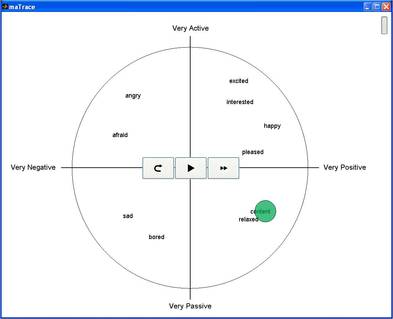
Dr Don Knox - "When we first say to people what we're doing, classifying music and emotion, some of the first comments you get are 'well, I put happy music on to do happy things and dance, and I'll put sad or relaxing music on to do this'. Really, it's much more complicated than that and the music psychologists are really opening our eyes to how people actually interact with music. That relationship and emotional connection with music and how people use it for stress relief and pain reduction is much more complicated than just happy music for happy things and sad music for sad things."
Sarah - And classifying each piece of music in such a detailed way is allowing the music psychologists to figure out exactly what it is in the music that makes us choose it for a particular situation, and how it can affect not just our emotions, but our physical perception too.
Professor MacDonald explained to me how the project is building on previous studies, carried out with his colleague Laura Mitchell...
Professor MacDonald - "Earlier work purely looked at people's preference; so what we initially found out was that listening to your favourite music reduced your anxiety perceptions and your pain perceptions. We had a huge range of different types of music that was selected - things like Hotel California by the Eagles, Pachelbel's Cannon, In My Place by Coldplay. And we originally suggested that there were no common structural features between these pieces of music but Don's work along with Scott Beveridge has started to show how certain structural features of music are important in trying to predict their emotional effect on the listener."
Sarah - So although there is still work to be done, the implications of the project are really exciting. On the one hand, knowing how people respond emotionally to particular structures found in music, like rhythm and timbre, could have clinical applications in music therapy and using music for pain control, and also, for all those music lovers out there addicted to their mp3 players, it could herald a new way of classifying the music in your library and new ways of searching for music to match your mood.
| How music conveys emotion could benefit the treatment of depression and the management of physical pain. |
How does the moon cause two tides every day?
Dominic - Mike's absolutely right that it's the pull of the moon on the water in the oceans that causes the tides, and the moon is only above one point on the Earth at any given time. It's not actually the direct pull of the moon on the water which is causing the tides.
The Earth and the seas are both in free-fall towards the moon - it's rather like being on the space station where you're above the Earth and because you're falling towards the Earth and the space station and you are falling at the same rate, there's no relative speed between you and you feel like you're weightless. Similarly, the water in the sea is receiving the same pull as the rest of the Earth and so it's not pulled up above the surface of Earth by that effect. The effect is actually that the Earth is of a finite size. The water on one side is pulled fractionally more strongly than the water on the other side because it's closer to the moon and the gravitational force decreases with distance from the moon. And the water which is closer to the moon is pulled more strongly and so it's pulled up into a tide. The [water] on the opposite side is pulled slightly less strongly and so it's pulled down less strongly towards the surface of the Earth and so you get a second bulge on the far side of the Earth. Chris - So in other words, there are two blobs of water on the Earth's surface. One on the Earth's surface closest to the moon because the water is feeling the force from the moon and you've got a bulge there, and then on the opposite side of the Earth, furthest away from the moon because that water is further from the moon and it's being pulled less than the Earth is so you've got a second bulge there. And at 90 degrees you've got two dips which are the low tides, is that right? Dominic - That's exactly it!
How fast is a bird flying inside a moving bus?
Chris - George says, "If a bus is travelling at 100 miles per hour [mph], and you are at the back of the bus holding a bird, and then it is let go and it flies towards the front of the bus, how fast is the bird flying?" Dave - Okay, this is essentially a question about relative speeds. Compared to someone standing on the ground, the bird is flying at 120mph or something depending on how fast it's flying - so compared to someone on the ground, 120mph. Compared to someone on the bus it's doing say 20mph. The bird, because it's moving through air at 20mph, the important thing for the bird is the fact that it's going at 20mph because the speed the bird is moving through the air will affect how its wings behave and whether it can fly and things like that. So basically, all answers are true depending on where you're looking from. The most important thing is how fast the bird is moving through the air, so 20mph. Chris - So as far as the bird is concerned, the bird is going along at whatever speed it flies at. As far as an observer in the bus is concerned, the bird is flying at however fast the bird thinks it's flying. But a person outside the bus thinks the bird is flying at the bird speed plus the bus speed. And this is where is breaks down with light, isn't it? Because if you did the experiment with light, that is not what you'd see. Dave - No, the bizarre thing about the way the universe seems to work is that if you did the same experiment with light, everyone would see that it was going at about 300 000 km per second and everything else changes to make that work. So time and space will warp so that appears to work.
Why does water cool more quickly outdoors, even when the weather is hot?
Dave - That's very interesting. The answer I was going to give immediately was evaporation because the maximum amount of heat which water looses is generally due to evaporation and therefore if you've got wind blowing across the top, all those hot molecules evaporating off the top will get blown away quicker, you can get more evaporation and it's going to lose heat quicker. It could still be: I would have thought the only big effect is going to be the wind and it could just be that even just losing heat to the air around it is a lot faster if wind is blowing past something because otherwise, if the air is stationary, the hot object just heats up the air around it and then that insulates it from the rest of the air. If there's a wind blowing past, it will keep moving that hot air away and so you can keep losing heat much more quickly. Certainly the only thing I can think of is that it's to do with the wind but possibly due to conduction as well as evaporation.

Is it evolutionarily advantageous to be a cannibal?
Dave - I guess it depends what you are and how many diseases you've got that are going around. The big disadvantage to being a cannibal, evolutionarily, is that if you're eating something of your own species, it can get all the same diseases that you can. And therefore: you eat them and then you get all of their diseases and then you die. Chris - Yeah, that's exactly what happened to the Fore people in New Guinea who developed a disease called Kuru, which was a prion disease - a bit like Mad Cow Disease but it was a human equivalent. And because it was a ritual for the women in the tribe to eat the brains of a dead relative when they buried them, there was an excess of women affected by this terrible neurological condition that came on all of a sudden. The actual word means "he who trembleth" in the native language because people got this BSE-like disease and they all died. It was first identified as a cannibalistically-transmitted tendency many years ago which means it's interesting that people went and did almost the same experiment with cows and then were really surprised when BSE came along.
So I would say that actually, from an evolutionary point of view, it is not advantageous to be a cannibal, at least not for humans, and so that probably explains why the practice is so rare. Dave - Although I guess in some other species, especially if you're a very small animal which is quite short-lived and disease isn't so much of an issue, if you're really, really hungry then cannibalism is better than dying of starvation. So things like locusts will eat each other quite happily if they're hungry. Chris - So there you go, David Whorly 94: if you are going to be short-lived then it's probably okay for you to be a cannibal - you may benefit from the increased nutritional benefits of eating your compatriots. Muscle has got lots of iron in it and lots of protein which will help you to build your own muscles up. But you could, if you're going to live a long time, succumb to all kinds of nasty diseases so it will be disadvantageous.
When a meteor falls to Earth, does it break the sound barrier?
Dominic - Yes, it breaks the sound barrier - actually by a very long way. These meteors are typically travelling at 10.000-30,000 km/s when they impact the atmosphere [and sound only travels at 330m/s], so they'll produce a massive shock-wave and you may hear a bang if the meteor is big enough. Chris - A sonic boom? Dominic - A sonic boom - yes, exactly! And in fact, if you have a large meteor, such as the one that hit Tunguska in 1909, it was the shock-wave that caused most of the damage rather than the object itself. The object would have been only a few tens of metres across, but the shock-wave it produced devastated an area of several square miles in Siberia. Dave - I guess the reason why you don't normally hear [sonic booms] for small shooting stars is they don't get far enough down so the sound doesn't reach you standing on the ground. Dominic - Yes. And also - they're very small objects, most shooting stars.
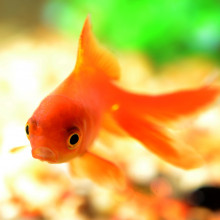
Can a goldfish swim in outer space?
Chris - Warren said what would happen if I took my fish in its bowl into orbit abroad the International Space Station? Now, assuming that the fish does actually survive the journey up there and it doesn't get upset and all that kind of thing with the water coming out.. what would be the implications, in terms of physics, for a fish suspended in microgravity in its bowl in water? What do we think?
Dominic - I think you would have some problems keeping the water in the bowl, obviously it would start to slosh about. But once your fish started trying to swim along - and of course fish swim by pushing water backwards which propels them forwards by the conservation of momentum - that means that the water will be pushed out of the bowl and the fish will be swimming along in the air. Now, I'm not sure whether a fish could swim in the air in the space station?
Chris - I don't think it would move enough air, would it?
Dave - Someone has built a model fish made of a giant helium balloon which looks like a giant fish and it will swim through the air. So a fish, I think, would swim through the air very slowly. It would of course be running out of oxygen very quickly if it did that
Chris - I think the water would fragment wouldn't it, as Dominic says? Well let's assume that the water is in the bowl to start with - there is no gravity pulling down because the water and the bowl and the fish are all in free fall in orbit around the earth, so there is no net force actually applying the water against the bowl so that the bowl pushes back on the water and holds it in. So if the fish sort of disturbs the water enough all those resonances are going to build up and the water is going to splash out of the bowl, probably in lots of little particles that are then going to blob around in the air in the space craft. And that means the fish could end up quite literally out of water, so to speak.
Dave - Although surface tension is quite strong - and if it is a small fish - surface tension will hold the water in the bowl for quite a long time, I would have thought, unless you really slosh it about, and if it was a small fish, probably, actually, surface tension would hold it in the water.
How do bats know it is night time?
Chris - Brilliant question. The answer is it is all down to the body clock. As mammals we humans are diurnal - we are active in the day time. But we have in our brains a circadian clock. It's called the suprachiasmatic nucleus and that keeps time. It is a few thousand nerve cells, maybe 20,000 nerve cells that are all interconnected and they are running a genetic programme that works a bit like a molecular domino effect. So one gene turns on, it then turns on another gene, which turns on a third gene and that third gene feeds back and turns back off the first gene, and so on. And this molecular clockwork takes about 24 hours to go round a complete cycle, and as it goes round the complete cycle it is activating the cell in different ways.
So these nerve cells become more or less active and they secrete various hormones into the blood stream, and they go round the body and inform all of the tissues in the body that have their own body clocks, what time it is. So you have this master clock in your head and you have these other slave clocks - if you like - in every cell in your body. And that's how your tissues know what time of day it is. And jetlag is all about a disparity between when you really should be getting up and when your body is thinking it should be getting up, and you reset that body clock - in your brain - the suprachiasmatic nucleus- because there is a feed from the retina. Your eye has a very special set of nerve cells called ganglion cells at the back of the eye that can detect blue light and they send signals into this body clock to reset it, so that your body clock is in sync with when it is getting light and when it is getting dark, and that is why you can get over jetlag.
But some animals, rather than us who get up when it's light, some animals have reversed their response to their body clocks so when it gets light they go to bed and when it gets dark, they wake up. And they have all the same hormone signals that we do, they just respond to them in a different way. And mice are the same, mice are nocturnal, so they go to sleep when it gets light and they wake up when it gets dark and this is to avoid predation. And bats come out at night time as slaves to their body clocks and so they are actually using this very ancestral deep body clock inside the brain to work out what time it is. Dave - And I guess they are active in the evening and the morning when there is a little bit of light around so that they can keep resetting that body clock?
Chris - When they wake up in the night time, the sun is setting and this helps them because they respond to that, because there is a bit of light, as you say. And the other point is that they also use their body clock to navigate - because they know where the moon is, and they know where east and west is, because they know where the Sun is setting and they know where it is rising and they set their body clocks with the Earth's magnetic field as well. So they have a magnetic response element in their brains, they look at where the Sun is in the sky. They then know that the Sun rises and sets east and west. They know what time it is in their body clock and they lock their body clock onto the magnetic signal of the Earth, and they then know which direction to fly in and if you make them jetlagged, as one researcher I was talking to recently did, they can all fly off in the wrong direction. Isn't that amazing?

35:02 - Marine Renewable Energy
Marine Renewable Energy
with Ben Wilson, Scottish Association for Marine Science
Richard - Waves lapping the beach, wind bending the trees, and the tides pulling the pebbles along the shore. Increasingly, governments and energy companies are looking at ways of harvesting this energy. Well, it makes sense. But what about the environmental impacts of marine-based renewable energy technologies? Well, I'm on the beach at Oban in Western Scotland with Ben Wilson from the Scottish Association for Marine Science. Now, you're looking at the impact of these devices. What sorts of things harvest the power of the waves or the tides?

Ben - Some of them, at their most basic, do look just like wind turbines put underwater. There are other ones that are more complicated with lots of different blades put on the rotors, other ones that are like wind turbines in tubes and so on. There are lots of ideas that people have had but it's very much a new thing.
Richard - Now we've heard about problems with wind turbines on land and birds. Are you imagining the same sorts of things are going to go on with these turbines underwater and fish or seals or whales?
Ben - What we want to make sure is that those devices that go into the sea are the right ones and that organisms that are already moving around in the sea are not going to become a cropper by bumping into these devices. What we're looking at in particular is, they're probably going to hear these devices upstream somehow. How are they going to hear it? What are they going to hear? And are they going to hear it far enough in advance to be able to take the right manoeuvring actions to actually get out of the way?
Richard - But before Ben could find out what sorts of noises renewables ought to make, he realised he needed to know what life beneath the waves already sounds like. Back in the lab, Ben played me some of his recordings.
Ben - This is a recording I made when I was working on Killer Whales and so I was listening away to some Killer Whales swimming around probably about half a kilometre away from the boat. And somebody way in the distance started a little out-board motor on a little skip and went driving away and completely drowned out all the recording I was trying to make.
[Plays whale noises]
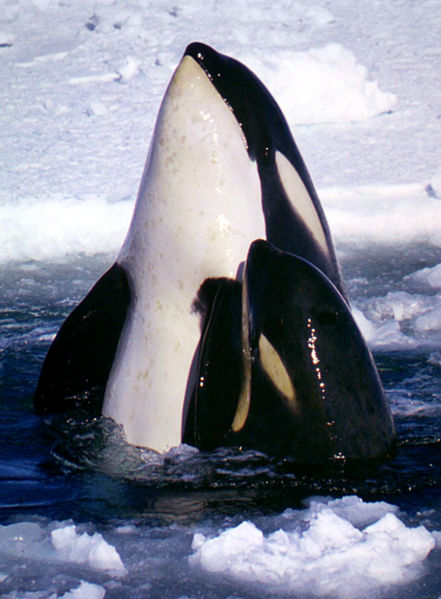 Richard - That sound we're hearing of the boat in the distance, would that be similar to the sorts of noises a turbine underwater might make?
Richard - That sound we're hearing of the boat in the distance, would that be similar to the sorts of noises a turbine underwater might make?
Ben - Well that's what we don't know - this is a new industry, these devices are being built at this very moment, so we don't know what they're going to sound like. Particularly of interest is what they're going to sound like after they've been in the sea for a couple of years. You know, the day they go in they're going to be nice and well-lubricated and so on but after they've been in a couple of years they might become a lot more noisy later on.
Richard - So you've got another sound here. What is this one? That's a bit different.
Ben - This is two noises that are all-pervasive, particularly in this area. First one is a sort of a "snap, crackle and pop" sound. What's commonly called "snapping shrimps". It's not quite clear what's making that sound - it's probably a crustacean. If you go anywhere in coastal waters anywhere in the world, you'll hear this sound. And then the other sound on top of that is the noise of a seal scarer. It's quite high frequency, it's quite common around this part of the coast.
Richard - That's extraordinary that these sounds are recorded underwater! These are sounds of things that are happening under the sea that we wouldn't hear!
Ben - Absolutely. And the other point to this is that it's different in different environments. If you imagine walking through a wood, you hear different noises as you're near a road or as you're near some trees with the wind blowing through them. As you move around underwater, you get this soundscape of different sounds in different areas.
Richard - So how will you use the results of this? Once you've gathered your sounds, how will you use that?
Ben - I think the first thing is an appreciation of what it sounds like underwater. We need to get an idea of what the variation is and how it varies between different environments where these things are going to go. And then the second one is that we need to make sure that the noises that devices are making will be audible to animals moving through and if not, do we need to think about adding a bit of noise?
Richard - So can we just end with one more sound? What's this one?
Ben - Okay this is an unusual sound that we discovered a couple of years ago and kind of shot us to fame. It's a sound made by herring. We don't know what they use it for - probably communication. They basically blow bubbles out of their rear-end and in it comes a sound.
Does running in a dream burn calories?
Chris - What a terrific idea - sort of lazy exercise isn't it? You sort of lose weight while you are dreaming and sleeping! Well the answer is kind of yes, to a certain extent and let me explain why. When you go to sleep your metabolic rate is lower than it is normally anyway. You go down closer to your basal metabolic rate because your brain is less active, but it is not less active all the time. When you actually start dreaming your brain activity actually becomes very, very high. It's almost, in fact, as active as when you are awake, and so your brain metabolism will mean that because you are dreaming, you are burning more energy for a start. But also when you dream there is a part of your brain called the subcoeruleus region, which is in your brain stem - the thing that connects your forebrain to your spinal cord. The role of this brain region is to gate or suppress the passage of motor information going out from your brain to your muscles, to stop you acting out your dreams. So when you are dreaming about something that involves physical activity - you might have had these dreams where you suddenly think, I feel really weak, I can't run away fast enough, or I can't get away. And there is also a manifestation called sleep paralysis when people wake up, but this paralysis hasn't been taken off (which should happen when you first wake up) and they lay there feeling seemingly paralysed and can't move for a little while before this brain region turns off. So although you've got this paralysis going on, some of the muscles that you would normally be using to run away, or do your thing - whatever your doing - your exercise in your dream, those muscles might be a little bit more facilitated, they might be a little more keen to work than they would do otherwise. So you might find that there is a slight elevation in metabolic rate because of the dream. But it is not going to be unique to a dream about running. You will burn a few more calories, but just because probably you are dreaming and therefore more active during that phase of sleep. But I don't think you could programme or plan to go to sleep and dream intensely about running and exercise and then wake up both fitter and lighter in the morning, unfortunately. Dave - I Guess unless you are sleep walking?
Chris - Well that's true. That is a very good point!
If the world was made of glass, would we be able to see through it?
Dave - Glass is obviously transparent, so if the world was a beautiful pane of glass, you could see straight through it. But if you've ever dropped a glass on the floor, it shatters into thousands of pieces. If you've got loads of little pieces of glass, it stops being transparent. although each piece of glass is transparent, because when light hits a surface, some reflects and some refracts (it bends), if you have a pile of rough bits of glass, you get lots of reflections and refractions and the light all merges together into a white blur. This is why ground glass always looks white. Chris - That's the same reason why snow looks white when water is transparent isnt' it? Dave - Yes, and the same with sugar - each crystal is transparent, but a bowl of sugar looks white. So because the Earth isn't nice and flat and shiny like a pane of glass, if it was made out of glass it would probably look white.
Why does morning breath smell?
Chris - The reason for this is that when you go to sleep, your metabolic rate drops, your activity level drops, and your body secretions dry up. So your eyes produce fewer tears, other mucous membranes produce fewer secretions and your mouth produces less saliva. Your saliva has got two roles: one, it washes away bacteria and two, it also contains varous things like antibodies and other chemicals - lactoferrin and so on, that suppress the growth of microorganisms. So because at night you have less saliva, your mouth is dryer, and you've got fewer of these antimicrobial compounds like lysozyme, microbes tend to flourish more at night when we go to sleep.
The mouth contains a very diverse population of bacteria - there may be 80-100 different species in the mouth, more in some people. Some of those bacteria are capable of metabolising various sulphur containing compounds, and from those compounds they produce volatile chemicals that are quite whiffy, like hydrogen sulphide. So you wake up with a proliferation of these bugs in your mouth, more than you would have when you were making lots of saliva. As a result they make more of these whiffy chemicals and your breath smells, at least until you actually drink something to wash them away and begin making saliva that then helps to suppress their activity.
Does light travel at the same speed at either end of the spectrum?
Dominic - If you have light travelling through a vacuum, yes it it. So if you're looking at starlight, which has been travelling through a vacuum in space, all of the different colours of light in the spectrum of light from that star will have travelled to us at the same speed. But if light is travelling through a medium like air or glass, which presents some resistance to the light, which is to say it refracts the light, it bends the light, then different colours travel at different speeds. That's why prisms split up light into different colours. the light is travelling at different speeds through the prims.
Why does water form swirly patterns?
Dave - You'll certainly see some swirling effects if you've got the water flowing past a column due to a tide - the wake formed can look quite swirly. You can also get whirlpools created by tides flowing round corners and water being sucked underneath, which form what used to be called maelstroms.
Chris - There's some incredible youtube footage of one off the west coast of Scotland Dave - And there's some quite serious ones in the Strait of Messina that I sailed past once too. Chris - Not into them I hope!
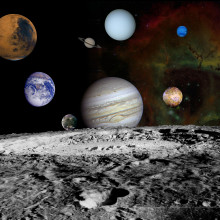
Would we be able to see rogue planets?
Dominic - Yes, we think there are quite a lot of objects like this. We think solar systems form, and then often many of the smaller planets get thrown out by the larger planets. And one reason we think that is, is that a lot of the solar systems we have seen around other stars have Jupiter sized planets very close in to their host stars. It's absolutely impossible to form these Jupiter sized planets there, so these planets must have formed in the outer parts of these solar systems and then spiralled in. As they spiralled in they will have thrown out any smaller planets that they spiralled past. So there probably are a large number of lonely planets just lying out there in outer space, not near any stars. Unfortunately they are virtually impossible to see and we have no idea how many there are because there's nothing to light them up - they're cold and dark. Chris - And let's hope they're not heading this way!
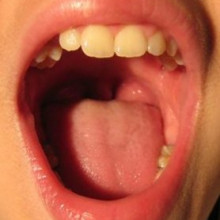
Why is your breath sometimes warm and sometimes cold
What happens to the energy of a coiled spring that is placed in a pot of acid?
Dominic - Well when the acid dissolves it obviously the spring will break and will dislodge the acid in the pot and that will create turbulence inside the acid and that will ultimately be dissipated as heat and so the acid will heat up. Dave - Or even the atoms inside the spring, because they're being stretched, they're at a slightly higher energy - they've got more potential energy so chemically, when something rips them off it will take less energy to break that bond so theres less energy lost when you break the bond so more is left over when it reacts with the acid so you get more heat.
What is the point of space exploration?
Dominic - Well i guess it's driven a lot of technological advance in the last 30 yers or so. I mean the Apollo Missions certainly inspired people to create technology that they wouldnt have created otherwise. Dave - And GPS is really useful and we've found out a lot about the Earth - you can send up satellites up to find out where the forests are - there's a huge amount you can find out about the Earth from space. Chris - And on last week's show, my interview with Peter Quinn, who's in Australia - he's the Director of the institute they've set up to try and get the square kilometer array in Australia. He pointed out that wifi is entirely based in terms of its protocols on radio astronomy, and the world wide web - with CERN saying 'we're going to have all these big projects and we need ways for physicists to talk to each other' - that directly catalysed the development of html, the language that made the web possible. So i think there are all these other spin offs that we can thank the exlploration for. Dave - Plus just finding out what's out there!
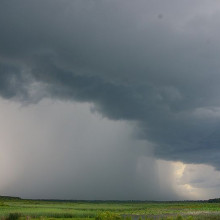
53:27 - What is the smell of rain?
What is the smell of rain?
We put this question to Beryl Zaitlin, a hydrogeologist from the University of Calgary in Alberta, Canada...
Beryl - Well, I looked it up and the actual answer is that we really don't know! Odour is something that has to be a volatile chemical of some sort; it's a compound that goes to your nose and the receptors in your nose absorb that chemical. So it has to be some sort of chemical that's in the air. In the 1960s, two researchers - Bear and Thomas in Australia - extracted some oil from clay. They thought that oil had a biological origin and they thought it smelled like the smell of rain. That was all the research that was done on it for ten years. And then in the 1970s, Nancy Gerber, who was one of the very prominent researchers in taste and odour, isolated three chemicals from actinomycetes. Diana - Actinomycetes are bacteria that live in soil and break down plant material like leaves and twigs, making compost. Beryl - One of those chemicals was 2-isopropyl-3methoxypyrazine which is what she thought Bear and Thomas had originally isolated. It was a chemical that smelled like rain. She published that she thought this might be the chemical that made the smell of rain and she thought it might have been the chemical that Bear and Thomas had isolated. And that was it, nobody's done anything since as far as I can tell. It might be that the smell of rain comes from Actinomycetes and it might not. At the moment, nobody really knows as far as I can tell.
Diana - So it could be that these bacteria are producing this smell but the odour jury is still out on this one. We had some suggestions on the forum, including Tay who said it could be plants emitting lots of gases when they get wet and their pores open. And our "Forumer of the Week" award goes to Variola who identified the smell as geosmin, an organic compound which bacteria - the actinomycetes - produce when they die, usually after the soil has been disturbed or it's rained following a dry period. Geosmin is one of the other chemicals that Nancy Gerber, whom our expert answerer mentioned, isolated when tracking down the earthy smell.









Comments
Add a comment